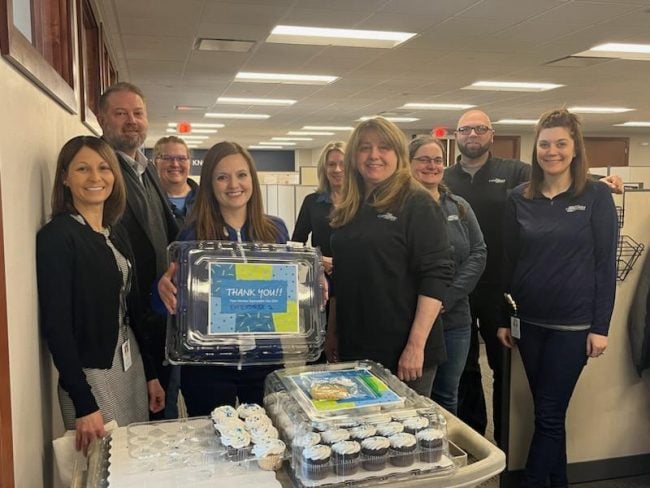Insurers that operate thrifts would be subject to the samecapital standards at the holding-company level as banks, accordingto new rules proposed by federal regulators.
|The new requirements are contained in a proposal first issued byfederal banking regulators for comment in June.
|The comment period was extended from Sept. 7 to Oct. 22 in anotice published Wednesday.
|Under the proposal, special capital treatment for insurers wouldbe applied to specific activities, such as separate accounts,deferred acquisition costs and insurance underwriting.
|Sue Stead, head of the insurance-regulatory practice at NelsonLevine de Luca & Hamilton in New York, says stateinsurance regulators are aware of the Fed proposals, and areconcerned “about the potential impact of federal regulation onhow insurers are currently regulated.”
|Stead says state and federal regulators are in talks to ensurethat the new rules are compatible with the current regulatorystructure.
|The proposal was published for comment by the Board of Governorsof the Federal Reserve System; the Office of the Comptroller of theCurrency; and the Federal Deposit Insurance Corporation.
|The Federal Reserve previously identified 20 holding companies and constituent thrifts it intends tooversee. They include American International Group, StateFarm, Nationwide, Prudential, Northwestern Mutual, MassachusettsMutual and W.R. Berkley.
|But this list of regulated companies is considered a “movingtarget” by federal regulators and is subject to change because anumber of these companies are seeking to change their status inorder escape oversight by the Fed as a thrift-holding company.
|Robert Benmosche, AIG president and CEO, brought up the issuelast Friday during AIG's conference call with analysts to discussits second quarter results.
|He said AIG has made a comprehensive study of how it will beimpacted by federal regulation, and that its only concern iswhether it should divest itself of its Wilton, Conn.-basedthrift.
|He acknowledged that AIG “is giving thought to whether we shouldnow close the bank we have because we're concerned about thataspect of it and an insurance company invests very differently thana bank would …”
|In the latest proposal, the Fed said it had asked for comment inearlier proposals, and had also met with industry representativesand other regulators.
|The Fed said these efforts had yielded concerns about imposing“bank-centric” consolidated capital standards, the need toappropriately address certain instruments and assets unique tosavings and loan holding companies, and the need for appropriatetransition periods and the degree of regulatory burden.
|Moreover, the proposal says, “a number of commenters suggestedthat the Board defer its oversight of savings and loan holdingcompanies, in part or in whole, to functional regulators or imposethe same capital standards required by insurance regulators.”
|But the Fed said in the proposal, “The Board believes both ofthese approaches would be inconsistent with the requirements setout in section 171 of the Dodd-Frank Act.”
|The proposal also that “ the [Fed] Board believes it isimportant to apply consolidated risk-based and leverage capitalrequirements to insurance-based holding companies because theinsurance risk-based capital requirements are not imposed on aconsolidated basis and are based on different considerations, suchas solvency concerns, rather than broad categories of creditrisk.
|This article was originally posted at PropertyCasualty360.com,a sister site of Credit Union Times.
Complete your profile to continue reading and get FREE access to CUTimes.com, part of your ALM digital membership.
Your access to unlimited CUTimes.com content isn’t changing.
Once you are an ALM digital member, you’ll receive:
- Critical CUTimes.com information including comprehensive product and service provider listings via the Marketplace Directory, CU Careers, resources from industry leaders, webcasts, and breaking news, analysis and more with our informative Newsletters.
- Exclusive discounts on ALM and CU Times events.
- Access to other award-winning ALM websites including Law.com and GlobeSt.com.
Already have an account? Sign In
© 2024 ALM Global, LLC, All Rights Reserved. Request academic re-use from www.copyright.com. All other uses, submit a request to [email protected]. For more information visit Asset & Logo Licensing.









